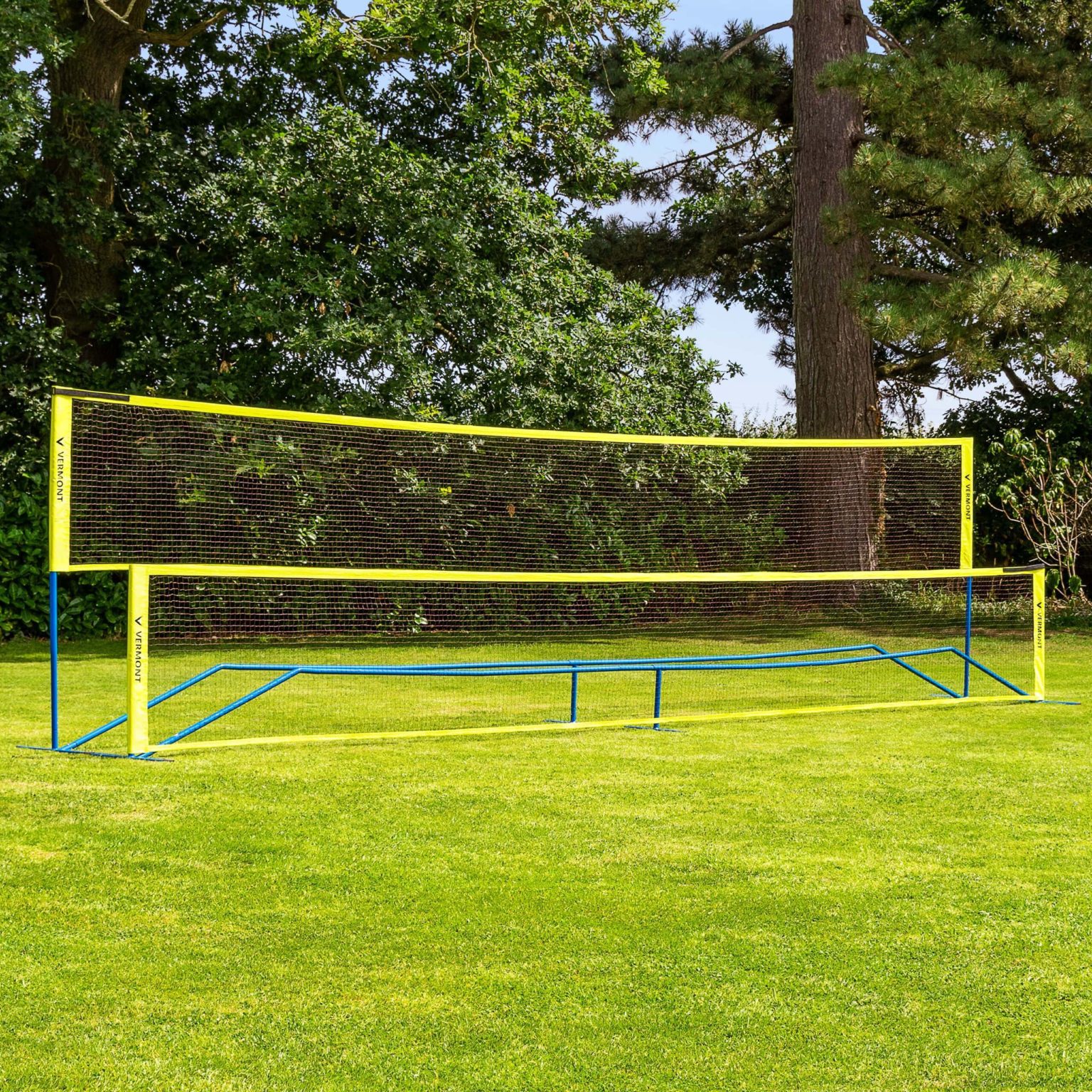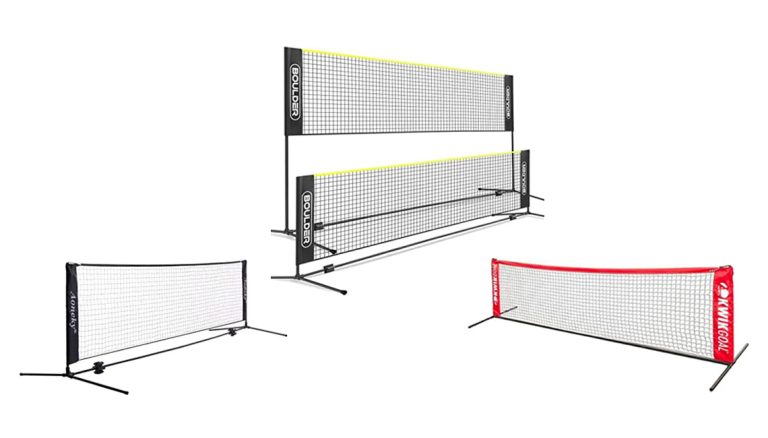I. Introduction

A. Importance of Portable Tennis Nets in the Game The portable tennis net serves as an essential equipment in both professional and recreational tennis matches. It provides a clear and defined boundary for players, aiding them in executing accurate shots and maintaining the integrity of the game. Portable nets also allow for flexibility and convenience, as they can be easily set up and transported to various locations.
B. Growing Popularity of Portable Tennis Nets Portable tennis nets have witnessed a surge in popularity due to their versatility and ease of use. They are becoming increasingly favored by casual players, tennis coaches, and tournament organizers, as they offer convenience and are suitable for a wide range of playing environments, such as parks, beaches, and backyard tennis courts.
II. Key Materials Used in Portable Tennis Nets
A. Frame Materials

- Steel Frames Steel frames are commonly used in portable tennis nets due to their robustness and durability. The heavy-duty construction ensures stability and longevity even in demanding playing conditions. Additionally, steel frames often feature a powder-coated finish, providing resistance against corrosion and enhancing their overall aesthetic appeal.
- Fiberglass Frames Fiberglass frames are lightweight and offer excellent portability. They possess high tensile strength while remaining flexible, allowing them to withstand repeated use and impact without compromising their structural integrity. Fiberglass frames are suitable for players who prioritize ease of setup and transport.
- Aluminum Frames Aluminum frames strike a balance between strength and weight. They are lightweight, making them portable and suitable for players who frequently move from one location to another. Furthermore, aluminum frames offer excellent resistance to rust, making them ideal for outdoor use, where they may be exposed to moisture or harsh weather conditions.
B. Netting Materials

- Nylon Netting Nylon is a popular choice for portable tennis nets due to its durability and longevity. It offers excellent resistance to wear and tear, allowing players to enjoy consistent play over an extended period. Additionally, nylon netting possesses good elasticity, ensuring that it can endure the impact of high-speed shots without breaking or sagging.
- Polyester Netting Polyester netting is known for its strength and resistance to stretching or sagging. This material is often reinforced with additional layers or coatings to further enhance its durability and provide extended usage. Polyester netting performs well in various weather conditions, making it suitable for both indoor and outdoor play.
- Polyethylene Netting Polyethylene netting is highly resistant to abrasion, making it an excellent choice for areas with rocky terrains or rough surfaces. Its strong composition ensures minimal wear and tear even in challenging playing conditions. Polyethylene netting is popular in recreational settings, where durability is paramount.
III. Advantages and Considerations of Different Materials
A. Steel Frames
- Durability and Longevity: Steel frames are known for their robustness and ability to withstand intense gameplay. They offer excellent resistance against impact and remain sturdy even in challenging conditions.
- Stability and Support: The heavyweight nature of steel frames provides stability, ensuring the net remains in place during gameplay. They are less prone to movement or tipping over, guaranteeing a consistent and reliable playing experience.
B. Fiberglass Frames

- Lightweight and Portable: Fiberglass frames excel in terms of portability. Their lightweight construction allows for easy setup and transportation, making them ideal for players who frequently move from one location to another.
- Flexibility and Shock Absorption: Fiberglass frames possess inherent flexibility, allowing them to absorb the impact of tennis balls without breaking. This elasticity enhances player safety and prevents unnecessary damage to the frame.
C. Aluminum Frames
- Corrosion Resistance: Aluminum frames are highly resistant to rust and corrosion, making them suitable for outdoor use. This material can withstand exposure to moisture, ensuring prolonged durability in various weather conditions.
- Sturdiness and Durability: Aluminum frames provide a sturdy base for the net. They offer a balance between strength and weight, ensuring a stable playing experience. Additionally, aluminum frames are known for their long-lasting durability.
D. Nylon Netting
- High Tensile Strength: Nylon netting is renowned for its strength and resilience. Its high tensile strength allows it to endure the force of powerful shots without breaking or sagging, providing consistent playtime after time.
- Weather Resistance: Nylon netting exhibits excellent resistance to weather and environmental factors. It withstands exposure to sunlight and rain without deteriorating, ensuring long-term usage both indoors and outdoors.
E. Polyester Netting

- Improved UV Resistance: Polyester netting is often treated to enhance its resistance to UV rays, making it suitable for outdoor use. This treatment prevents fading and degradation, increasing the net’s longevity.
- Enhanced Durability: Polyester netting is known for its ability to resist stretching and sagging. With additional layers or coatings, it can withstand frequent and intense gameplay, making it a popular choice among players seeking durability.
F. Polyethylene Netting
- Cost-Effective Option: Polyethylene netting offers a budget-friendly alternative without compromising quality. It provides durability at a more affordable price point, making it an option for recreational players or those on a tighter budget.
- Easy Maintenance: Polyethylene netting is relatively low-maintenance, requiring minimal care and attention. It is resistant to abrasion and easy to clean, making it a practical choice for players seeking convenience.
IV. Factors to Consider When Choosing the Right Material
A. Intended Use and Frequency of Play:
Determining how frequently and where the portable tennis net will be used is essential in selecting suitable materials. Consider whether it will be exposed to intense gameplay or be transported frequently, as this may impact the durability and weight requirements.
B. Climate and Environmental Factors:
Evaluate the climate and environmental conditions the portable tennis net will be exposed to. Consider factors such as humidity, temperature variations, and the presence of saltwater or UV rays, as these can affect the longevity and performance of the materials chosen.
C. Budget and Long-Term Investment:
Set a budget and consider the long-term investment value of the portable tennis net. Determine the level of durability and performance required to make an informed decision that balances quality and cost.
Choosing the right material combination for portable tennis nets ensures longevity, stability, and optimal performance. By weighing the advantages and considerations of different materials, players can make an informed decision tailored to their specific needs and playing environment.
